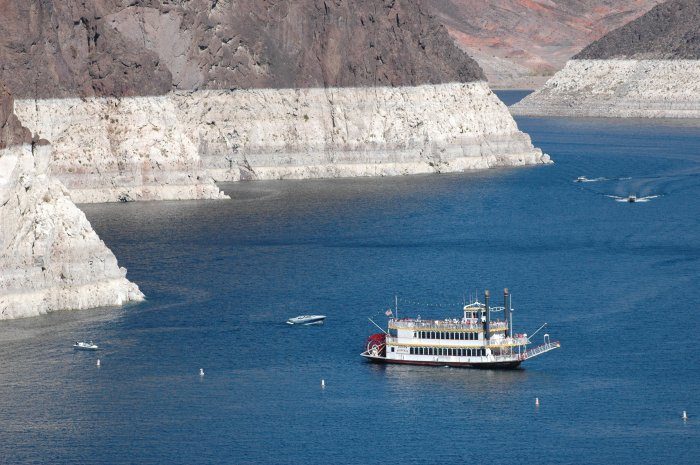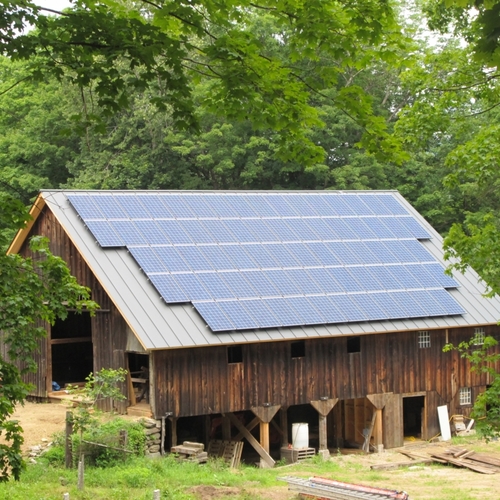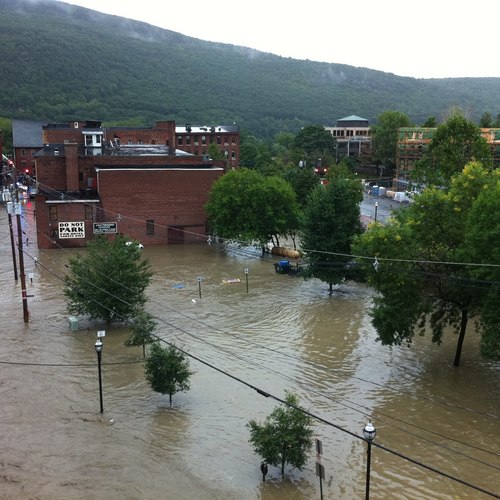
Image Credit: Ken Dewey, Applied Climate Sciences Group, University of Nebraska - Lincoln
Climate change is underway, and some of the impacts of that change will affect our homes. We need to account for that in the design, construction, and remodeling of our homes.
For starters, we should plan for hotter temperatures. To limit unwanted solar gain, it makes sense to reduce square-footage of west- and east-facing windows, provide overhangs above south-facing windows, and landscape around our homes with plantings that block direct sun. We should increase insulation levels to slow heat flow through the envelope, provide reflective roofing, and design our homes to make effective use of natural ventilation.
More intense storms call for greater resistance to wind and rain penetration, use of hurricane straps and other structural features to prevent uplift, more durable roofing, and building geometries that are inherently resistant to wind. We should design to the most stringent building codes, such as the Miami-Dade County Hurricane Code, even in areas where hurricanes are rare.
We should build only in locations that are well above flood elevations, avoiding lowland areas. If FEMA flood-elevation maps haven’t been updated recently, we should go beyond those requirements. Our stormwater drainage systems, including storm sewers, should be designed and built to handle increased runoff flow.
Heavy winds, ice storms, flooding, heat stress, drought, and other impacts of climate change are likely to cause more frequent and more extended power outages and damage to refineries. Extended drought could cause power outages if water levels in rivers and lakes drop so low that thermoelectric power plants cannot be cooled, and therefore have to be shut down.
A new, and perhaps even more frightening, concern is that terrorists of the future might target our energy systems—including electrical distribution lines, oil and gas pipelines, refineries, and power plants—causing extended blackouts or loss of heating fuels. A past director of the CIA, James Wolsey, has raised serious concerns about “cyber-terrorism,” in which people hack into our power generation and distribution infrastructure and cause system failures. Converting to the widely touted “smart grid” could unfortunately increase this vulnerability, even while it offers many advantages.
These concerns call for passive survivability as a design criterion. This means creating homes that will maintain livable conditions even during extended loss of power, loss of heating fuel, or shortages of water. To achieve passive survivability involves creating extremely well-insulated homes—homes so well insulated that without any energy inputs they will never drop below 50 or 55 degrees in the winter. Achieving passive survivability requires extremely high insulation levels–in colder climates, this means walls over R-40, ceilings or roofs over R-50, triple-glazed windows with multiple low-e coatings, very tight construction (augmented by mechanical ventilation), and passive solar gain through south-facing windows.
In warmer climates, we can see some of the features of passive survivability by examining the “vernacular architecture” that existed before 1950—when air conditioning emerged. Traditional homes in New Orleans had wrap-around porches to keep direct sunlight out and provide outdoor living space in hot weather, and they were designed for natural ventilation. We need to return to this climate-appropriate architecture—but we can give it a modern twist with the benefits of today’s best materials and computer modeling of energy performance.
In some parts of the country, droughts of the future may severely limit water availability. Significantly more water-efficient plumbing fixtures and appliances and water-conserving landscaping practices, if adopted widely, will reduce the likelihood that our water supplies become inadequate. And such measures will help individuals get by if water rationing ever becomes necessary during severe droughts or water shortages. Homeowners and municipalities in the West sometimes think about these issues, but drought can also occur in the east, where water is rarely on our minds. Eastern reservoirs tend to be shallower and hold less water than those in the west. In 2007, Atlanta came to within 30 days of running out of water.
Many of these elements of resilient design or adaptation to climate change are features that we would want to include in green homes for other reasons–and which will be addressed elsewhere in this top-10 list. But the motivation behind resilient/adaptive design is an important life-safety issue: keeping homeowners safe in the event of natural or man-made disasters.
In addition to this Energy Solutions blog, Alex writes the weekly blog on BuildingGreen.com: Alex’s Cool Product of the Week, which profiles an interesting new green building product each week. You can sign up to receive notices of these blogs by e-mail—enter your e-mail address in the upper right corner of any blog page.
Alex is founder of BuildingGreen, LLC and executive editor of Environmental Building News. To keep up with his latest articles and musings, you can sign up for his Twitter feed.
Weekly Newsletter
Get building science and energy efficiency advice, plus special offers, in your inbox.















4 Comments
Grid-Tied PV
Grid-Tied PV is the best way to benefit from PV in terms of net year round money saving, BUT is useless when the grid goes down.
Is there an easy and inexpensive way to get the best of both worlds? That is, does someone make a switch that allows your PV to power your own house if the grid is down?
Response to Kevin
Kevin,
Q. "Is there an easy and inexpensive way to get the best of both worlds? That is, does someone make a switch that allows your PV to power your own house if the grid is down?"
A. No. There are few tasks (other than water pumping into a tank or operating a fan) that can be done with PV-direct power. To power you house, you need a big battery system -- something that is neither easy nor inexpensive.
Is it time to give up solar gain through east-facing windows?
Alex,
As someone who lives in a climate where air conditioning is (for the time being) unnecessary, I'm not sure I'm willing to give up solar gain through east-facing windows just yet, simply because of changes that may occur in ten or twenty years. I think I'll keep high-solar-gain glazing in my east windows for the time being; I'll tackle the remodeling challenge when the time comes.
response to kevin
Kevin: Know where your at....been tossing this topic around for ages and there is no panacea.My goal is to go easy but not necessarily inexpensive. I unfortunately get called out during power outages, so it's more stressful being away knowing the homestead is powerless, in most cases. Getting near retirement age, and my goal next spring is building a small home with r-40 walls/r-60 roof and NO gas tied utility to save the monthly charge of gas meter. with electric mtr I can economically run mini-split and propane for instantaneous water heater. back-up. 12kv generation gets me thru the head game of being down if i'm away, or as i "mature", having electric for family/friends if need be. We are kidding ourselves thinking (foreign ownership?) power company infracstructure is going to take care of us.....1991 northeast incident and storms since have shown otherwise!!! PV has mostly been a dream since 70's, and blogs here have pretty much confirmed it. Not expecting much with electric cars since they are mostly fed with fossil generation!!
Log in or create an account to post a comment.
Sign up Log in